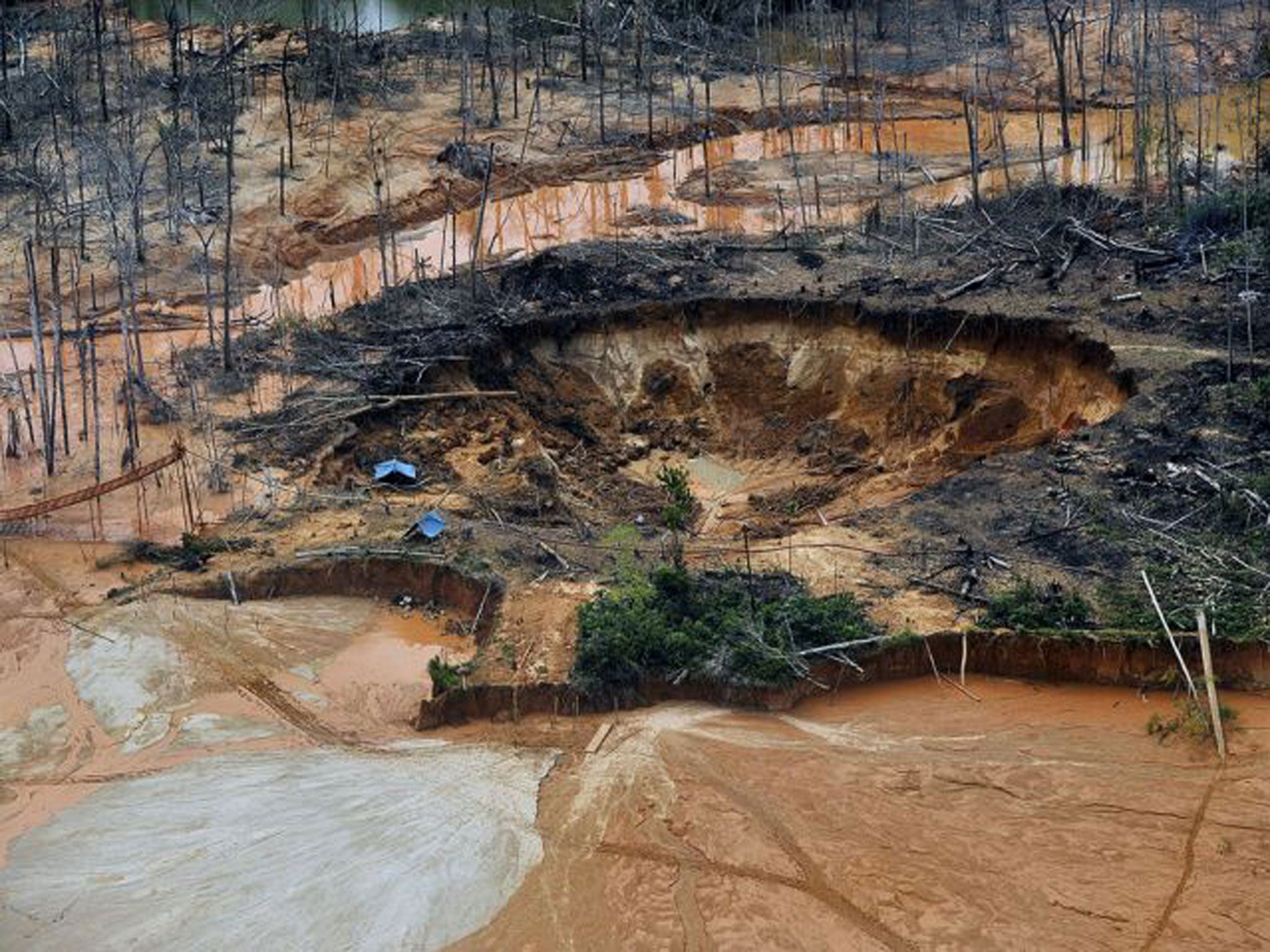Destruction of Peru’s rainforest by illegal gold mining is twice as bad as experts thought
3D model shows that illegal gold mining is wiping out a global biodiversity hotspot

Your support helps us to tell the story
From reproductive rights to climate change to Big Tech, The Independent is on the ground when the story is developing. Whether it's investigating the financials of Elon Musk's pro-Trump PAC or producing our latest documentary, 'The A Word', which shines a light on the American women fighting for reproductive rights, we know how important it is to parse out the facts from the messaging.
At such a critical moment in US history, we need reporters on the ground. Your donation allows us to keep sending journalists to speak to both sides of the story.
The Independent is trusted by Americans across the entire political spectrum. And unlike many other quality news outlets, we choose not to lock Americans out of our reporting and analysis with paywalls. We believe quality journalism should be available to everyone, paid for by those who can afford it.
Your support makes all the difference.The destruction of a global biodiversity hotspot deep in the Peruvian Amazon by illegal gold mining is twice as bad as previously thought, an authoritative new study using ground-breaking technology has revealed.
According to the report by the US-based Carnegie Institution for Science, 15,810 acres of rainforest in Peru’s Madre de Dios region, home to various nature and indigenous reserves as well as a booming eco-tourism industry, have vanished per year since the start of the 2008 global economic crisis.
The crisis saw international gold prices rocket as investors rushed to put their cash into the ultimate financial safe haven. In response, thousands of Peruvians have flooded into Madre de Dios, near the Bolivian border, in search of gold, dredging river beds and digging vast holes in the forest, largely beyond the reach of the law.
While many are impoverished farmers or labourers simply seeking to eke out a living, some have grown rich from the gold rush and now employ hundreds of other miners. Some use mechanical diggers and even dredging boats that can cost hundreds of thousands of pounds. Using a light aircraft mounted with Lidar, a new laser technology that can create 3D models of the Amazon and even pick out individual trees, the Carnegie study, carried out in collaboration with Peru’s Environment Ministry, was able to map the devastation in far greater resolution than previous research.
The results were then cross-referenced with earlier studies, allowing researchers to “break open” the pixels in the lower-resolution studies to reveal the true extent of the devastation. That allowed the team to discover the existence of numerous small, previously undetected mining camps hidden deep in the rainforest across Madre de Dios.
According to Greg Asner, the Carnegie scientist who led the study and co-authored a report in the US’s Proceedings of the National Academy of Sciences, these small camps account for 51 per cent of the total mining in the area.
“Our results reveal far more rainforest damage than previously reported by the government, NGOs, or other researchers,” said Dr Asner, who spent much of the summer flying with the Lidar over the Peruvian rainforest and examining the data.
“The gold rush exceeds the combined effects of all other causes of forest loss in the region, including from logging, ranching and agriculture. “This is really important because we are talking about a global biodiversity hotspot. The region’s incredible flora and fauna is being lost to gold forever.”
The administration of President Ollanta Humala has made some attempts to crack down on the miners, including raiding the largest shanty towns that have sprung up in the forest in a Wild West atmosphere of guns, brothels and alcohol. Yet the miners usually just melt into the rainforest. Meanwhile, the smaller camps are so well hidden that they have been impossible for Peruvian police to locate – until now.
Although the Carnegie research detailed only the amount of deforestation directly caused by the mining, the impact on the Amazon, and its people, is thought to be far greater. That is due largely to the tons of mercury used to extract the gold; it now permeates the water table and accumulates in the bodies of fish, which are a staple of jungle populations. Local people, including children, have now been found to have unhealthy levels of the element in their blood.
And the invasion of the rainforest by the miners has had many other devastating repercussions, from underage girls being forced to perform as sex workers to the wiping out of game and fowl through overhunting with rifles.
Ernesto Raez Luna, an adviser to Peru’s Environment Minister and co-author of the report with Dr Asner, added: “We are using this study to warn Peruvians of the terrible impact of illegal mining. It must be stopped.”
Join our commenting forum
Join thought-provoking conversations, follow other Independent readers and see their replies
Comments